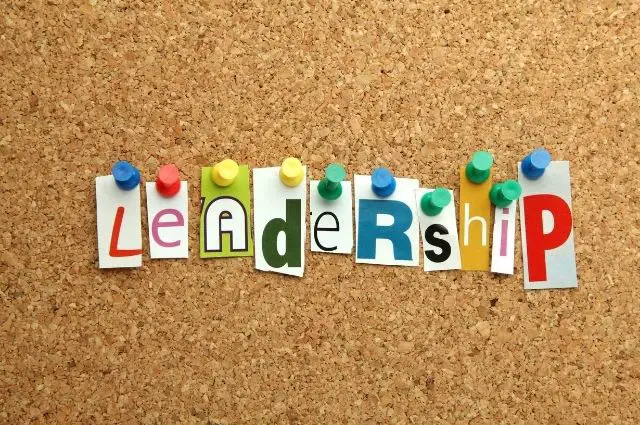Bureaucratic Leadership Guide: Definition, Pros & Cons, Examples
“There are no secrets to success. It is the result of preparation, hard work, and learning from failure.” – Colin Powell
The Bureaucratic Leadership is the management system a couple of large corporations are using till today. If you are dealing with a highly regulated business environment, this leadership style may have a massive impact. This style of management is also very efficient when used in companies that do not require much innovations or creativity from the employees. This post talks about the meaning of bureaucratic leadership, examples, and disadvantages.
Definition of Bureaucratic leadership
Bureaucratic leadership is one of the leadership styles postulated by Max Weber in 1947. It is a system of management whereby employees are made to follow specific rules and lines of authority created by the superiors.
In other words, these set of leaders function based on official regulations fixed by higher authorities within the organization.
The bureaucratic leadership pattern focuses on the administrative needs an organization has. Teams and departments of various private and public sector employ this system of management.
But it is used mostly in the public sector, which relies heavily on consistency and adherence to rules and regulations to get whatever results they seek.
However, there are unique features that differentiate the Bureaucratic style of Leadership from others practiced by organizations across the globe. Leaders in this leadership setting create a form of separation for the labor requirements which teams need to complete.
In this case, there is a line of command with each leader having separate powers in their jurisdiction. They also do not like laws that are more flexible. Instead, they prefer to have rigid rules and regulations to govern people.
Examples of Bureaucratic leadership
As one can deduce from the definition, the bureaucratic style of leadership is strictly centered on a structure and depends largely on a framework to support its function. But unlike other leadership styles like charismatic leadership, one can set up and follow the structure of the bureaucratic system of management with ease.
But the point is this style of leadership has been applied in different aspects of business and organizations which includes religion, business, and politics throughout the globe. A significant number of high profile personalities have also recorded tremendous achievements owing to the rigid framework of this leadership style.
Here are a few examples of leaders whose leadership style was purely bureaucratic.
1. Harold Sydney Geneen – ITT
Harold was a Bureaucratic Leader who served as president of the ITT (International Telephone and Telegraph Corporation). As the CEO of the organization, Harold recorded enormous success and accredited with helping the company develop into a multinational corporation.
However, Harold’s Bureaucratic style of Leadership is quite evident in how he structured and led ITT as the president. ITT’s accountability structure followed a hierarchical outline that was clear to everyone in the organization. Each department was formed on a hierarchical pattern, with the framework of the firm set on a macro-level. Also, smaller teams had the privilege to make micro-decisions where necessary.
2. Winston Churchill
Winston Churchill also exhibited Bureaucratic Leadership during his reign as a leader. He was once a British Prime Minister and credited with leading Britain to victory during the Second World War. As a leader, he had great charisma and had a structured system to ensure that individuals carry out their tasks as planned.
Churchill was a very decisive leader and one that is so difficult to persuade. He showed persistence at all levels to carry on with his plans against all the odds. He created the plan which helped Britain to conquer the enemies during the war.
Churchill is also a leader that is highly detail-oriented and meticulous, which are traits possessed by bureaucrats. He always wanted to know what was going on in all aspects of government and military efforts on the battlefield, especially during the war.
3. Collin Powell
Collin is another famous personality that used the Bureaucratic Leadership Style in politics. His leadership model is rooted deeply in the military, a public establishment known for the steady use of the bureaucratic system of leadership. Collin exhibited rare leadership qualities which earned him the position of general in the US Army and Secretary of State.
The military is an organization that likes to follow due process in the handling of its affairs. And that was where Collin drew his knowledge and understanding of the bureaucratic leadership style. He is one of the few leaders that enjoy following procedures in doing things.
Disadvantages of Bureaucratic Leadership
Although the bureaucratic style of leadership does seem like a perfect model, it does have several drawbacks, so one should consider before using it in any setting. A better understanding of these cons will help managers, politicians, and those in a leadership position to have a certain level of knowledge regarding the results to expect.
1. Increasing Productivity Can be a Significant Challenge
The leadership model of bureaucrats can limit the productivity or creativity of employees. The leaders use regulations and laws to create consistency in the workplace. They believe in remaining consistent, and that following the laid down rules, the status quo will produce the required result.
And when more regulations are added, employees would have no other choice but to slow down to make sure they are following the right procedures. Bureaucratic Leaders are satisfied with getting the same results, so long there is no much difference.
2. Not an Efficient System
The Bureaucratic Leadership Style is fundamentally about creating consistency. But that doesn’t mean the system is active, far from it. The point is giving workers the chance to complete the same task repeatedly may cause them to be experts in that particular area.
While this is great for the employee in question, the same cannot be said about the company. If the employee decides to leave, the manner in which the Bureaucratic System is set up will make it more difficult for the company to adapt to shortages of human resources.
3. Bureaucratic Leaders Find it Difficult to Adjust to Change
The Bureaucratic Leadership Style is not a flexible one. The leaders in this setting also believe in the status quo. In other words, what worked yesterday will also work today. And when things change, bureaucratic leaders would find it very difficult to change their rules and principles.
Great opportunities can be lost during the process. And considering how highly competitive the business environment is becoming having a leadership style that is not flexible isn’t a great idea for business growth.
Conclusion
The Bureaucratic System of leadership is quite useful for businesses looking for consistency, most especially on a large scale. Rules and regulations are being created. And this makes it even possible for more than one employee to produce equal results on different tasks carried out the same way.






